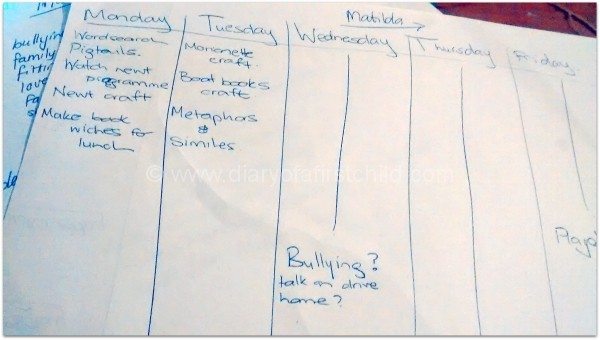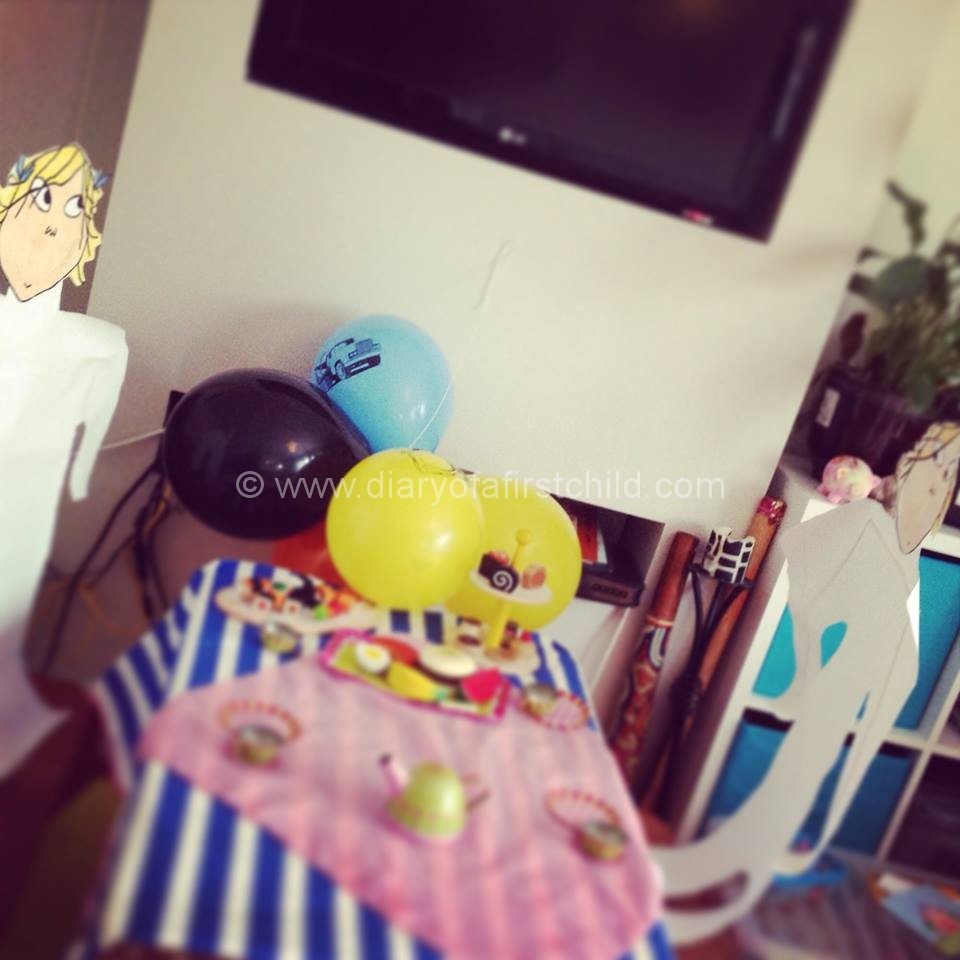Something I’m often asked is how we choose our learning themes, and how we ‘schedule’ our time. People often comment about how much I do with my children too, and the question about how I fit it all in comes up from time to time too.
In the beginning of our home education journey – what we called Play Learning – was that we could spend a week on a theme, quite happily. As the girls got a bit older and other activities and routines and groups began cropping up, we found that a theme a week was too much, so we stretched it out to about two weeks. In time I became less concerned with the number and days, and more with doing things until the activities I had prepared ran out, then starting on something new.
Anyway, for those interested, here’s how I go about our learning themes:
1) Pick a theme
I actually try to have a few themes ‘up my slieve’ so to speak, so that we never run out, but most importantly, I try to have at least one externally determined theme a month. For example Roald Dahl Day is a theme for September. In October our local theatre has a performance of Oliver Twist, so we will read the book and spend a week to two weeks dealing with themes and activities from that book. November sees a free film festival where we’ve managed to book tickets to see Little Women, so that will be one of our themes for then. December is so busy with Christmas, family, holidays and our annual advent calendar that we will probably not do one specific theme – but so we go.
Assuming one to two weeks per theme, each month will also have a seasonal theme: Halloween, National Friendship Day, Change of Seasons and so on. If there’s nothing exciting coming up, we look at what National Awareness Days are coming up, or our favourite thing to do, what author birthdays are coming up.
2) Brainstorm the theme
 This is a part I really enjoy. Having chosen a theme – let’s use Matilda as an example – brainstorm things that you can do with it. For example, there are huge themes in Matilda, like bullying, fitting in, a love of reading, for example. In Matilda Roald Dahl also uses a lot of similes and metaphors – something is like something else – so that’s a good talking point. He provides the measurements for the Chokee, so that’s something we could measure it out for a bit of numeracy. There’s the section with Amanda and her pigtails – plait some pigtails, which will be great dexterity exercise. And so on… if it’s a book you’re using as the theme, pull apart the main themes, and brainstorm how you can tie them in.
This is a part I really enjoy. Having chosen a theme – let’s use Matilda as an example – brainstorm things that you can do with it. For example, there are huge themes in Matilda, like bullying, fitting in, a love of reading, for example. In Matilda Roald Dahl also uses a lot of similes and metaphors – something is like something else – so that’s a good talking point. He provides the measurements for the Chokee, so that’s something we could measure it out for a bit of numeracy. There’s the section with Amanda and her pigtails – plait some pigtails, which will be great dexterity exercise. And so on… if it’s a book you’re using as the theme, pull apart the main themes, and brainstorm how you can tie them in.
Once I’ve exhausted my own ideas, I head to Pinterest, Twinkl, and Google to see what they can offer.
3) Put together a rough schedule
 Say I have decided on 10 activities, the next thing is to roughly divide them into days. In this instance we’ll look at a five day week. We have no time for learning themes on Thursdays, and Wednesdays we only have a couple of hours at home. Mondays and Tuesdays are largely our quiet days, or field trip days. So I’ll arrange the ten activities into the five days in such a way that we can fit them all in comfortably. This isn’t strict. If we run out of time on one day, or have more time on another we switch activities around. We are not captives to the plan.
Say I have decided on 10 activities, the next thing is to roughly divide them into days. In this instance we’ll look at a five day week. We have no time for learning themes on Thursdays, and Wednesdays we only have a couple of hours at home. Mondays and Tuesdays are largely our quiet days, or field trip days. So I’ll arrange the ten activities into the five days in such a way that we can fit them all in comfortably. This isn’t strict. If we run out of time on one day, or have more time on another we switch activities around. We are not captives to the plan.
4) Prepare the activities

Nothing can ruin a good plan like lack of preparation. If I leave the preparations for ‘on the day’ it can be lunch time before I’m ready to go, and by then the children have probably been watching movies or playing computer games, and they are no longer amenable to learning anything.
Instead, I try to prepare a few things ahead of time. I have a plastic tub filled with plastic envelopes, and inside the envelopes I have as many activities as time permits, ready to go.
Also in this tub I have the ‘fillers’. Things like colouring pages related to the theme (Google is your friend here!), word searches, activity books – for example a Rainforest Activity book when we’re doing the Rainforest theme – but mostly just printed bits from internet freebies, or Twinkl.
5) Set the scene
I don’t always do this, but it is a fun way to introduce a new theme. And my kids love it. For example for a Lorax theme, I set up a Truffula Tree Forest in the living room, complete with a ‘bed’ floating down the ‘river’.

One week they walked in and found (extremely badly drawn) Charlie and Lola figures sitting at the breakfast table. Recently I moved all our giant candy crafts to the garden for a Charlie and the Chocolate Factory ‘party’.

So this is very simply how I plan our themes, and pull them all off. It may seem a bit overwhelming at first, but once you get into it, it’s as if a new part of your brain switches on and it all rolls. Well, that’s how it is for me, anyway.
Hope you find it useful!
@thefrfamily something like this: http://t.co/q3gek9YrrZ ?
How We Plan Our Home Ed Learning Themes http://t.co/ZK7S69sLQD #homelearning #playlearningthemes #homeeducation
How We Plan Our Home Ed Learning Themes http://t.co/ZK7S69sLQD #homelearning #playlearningthemes #homeeducation
How We Plan Our Home Ed Learning Themes http://t.co/XtCtU89uAH @Luschkavo